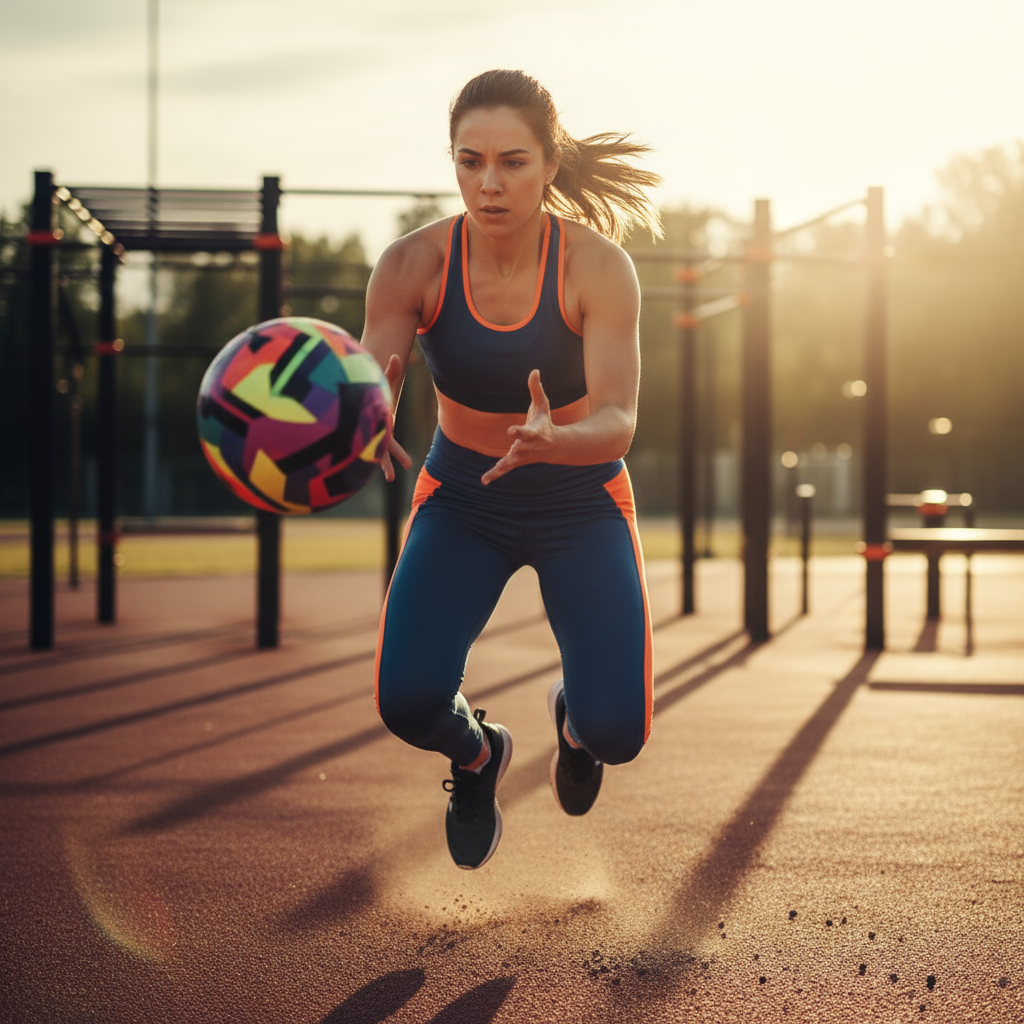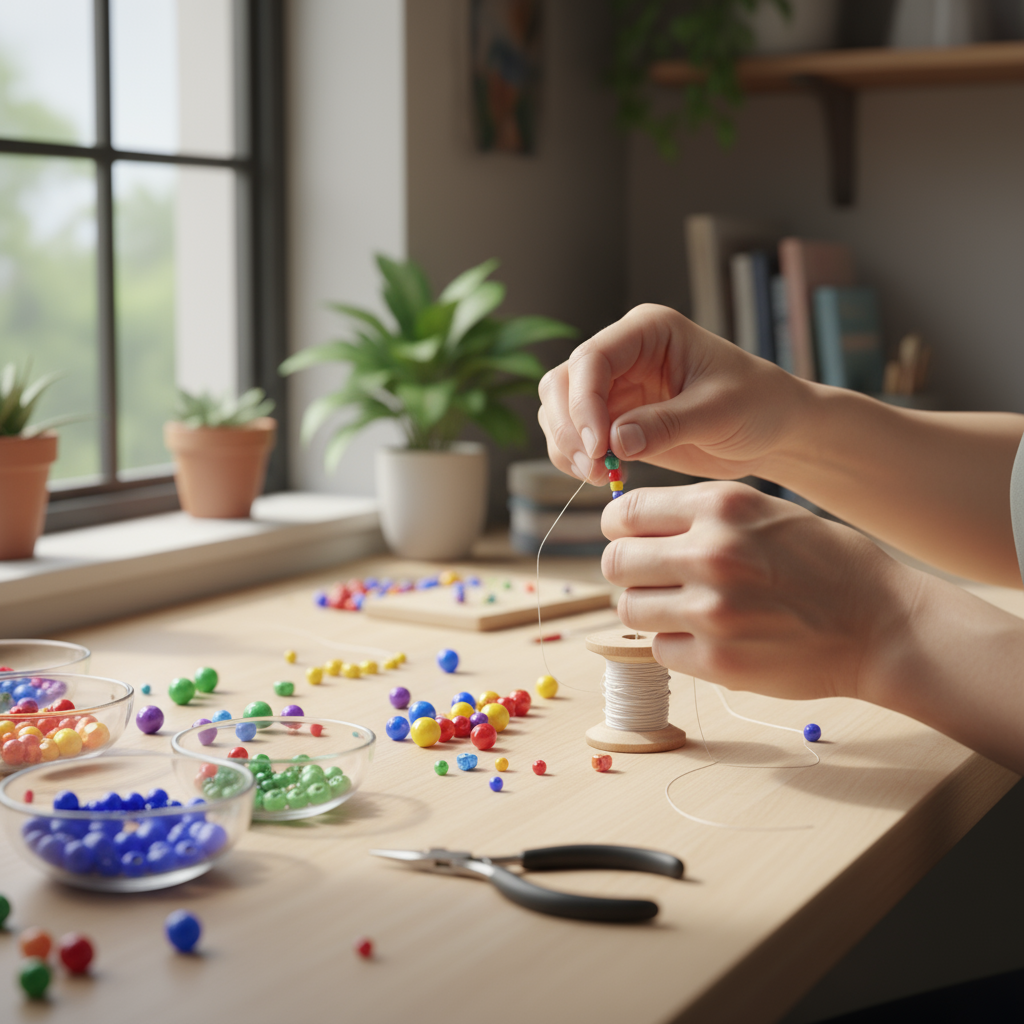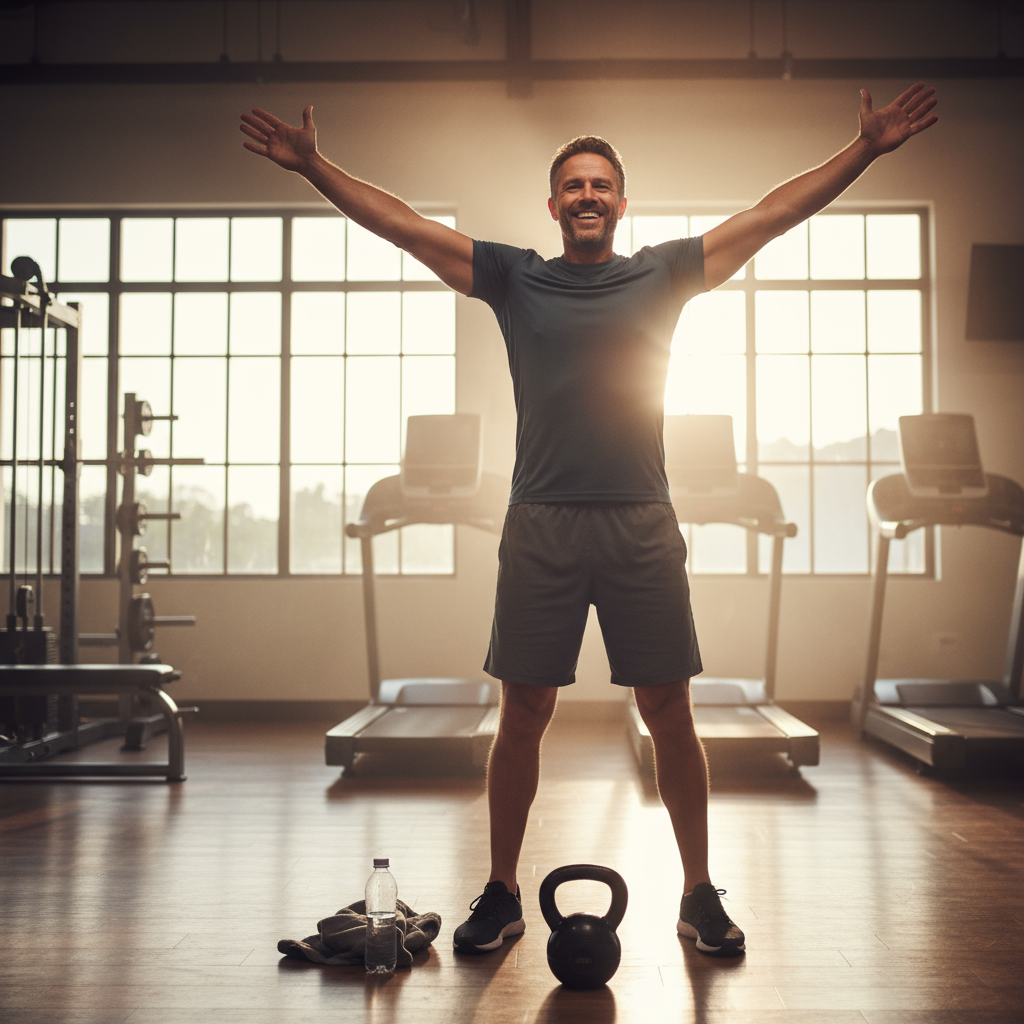
Table of Contents
Introduction
You know that person who effortlessly catches anything thrown their way? Or the friend who dominates at video games with those lightning-quick reflexes? Meanwhile, you’re over here struggling to pour coffee without spilling it. (We’ve all been there.) Here’s the thing—hand-eye coordination isn’t just some genetic lottery ticket. It’s a skill you can actually improve, and it affects way more of your life than you might think.
Think of hand-eye coordination as your brain’s GPS system for your hands. Your eyes spot the target, your brain calculates the route, and your hands execute the mission. When this system runs smoothly, everything from typing emails to playing tennis becomes second nature. But when it’s off? Well, let’s just say you might want to invest in some good spillproof mugs. This skill matters big time in fitness and sports—it’s often what separates the pros from the rest of us. And if you’re just getting into fitness, check out these functional fitness workouts that can help build the foundation for better coordination.
Poor coordination doesn’t just mean dropping things occasionally. It can make simple tasks feel frustrating and even create safety risks. The good news? There are tons of ways to train your brain and muscles to work better together. Juggling, ball games, even certain video games can actually rewire your coordination pathways. (Yes, you can literally tell people you’re “training” when you’re gaming.) If you’re new to fitness, starting with fitness challenges for beginners that include coordination drills is a smart move—they keep things interesting while building skills.
Now, here’s something most people don’t realize: what you eat affects how well your hands and eyes work together. Your brain needs the right fuel to fire those neural connections, and your muscles need proper nutrition to respond quickly and accurately. Athletes have known this secret for years, which is why their nutrition for athletes approach can benefit anyone looking to sharpen their coordination. Think of it as premium gas for your body’s coordination engine.
What You’ll Learn in This Guide
Ready to stop being the person who fumbles with everything? This guide breaks down exactly how to improve your hand-eye coordination, step by step. Here’s what we’re covering:
- Understanding Hand-Eye Coordination: We’ll break down the fascinating science of how your brain orchestrates this complex dance between your eyes and hands—it’s more intricate than you’d think, and understanding it helps you train smarter.
- Effective Exercises to Improve Coordination: Real exercises you can start today, from simple drills to more challenging activities. No fancy equipment required—though we’ll tell you what’s worth investing in if you get serious about this.
- Lifestyle Tips for Enhancing Coordination: How your sleep, diet, and overall fitness directly impact your coordination (spoiler: they matter more than you think), plus practical ways to optimize everything.
- Recognizing Poor Coordination and When to Seek Help: The signs that your coordination might need professional attention, and when it’s time to talk to a healthcare provider instead of just practicing more.
Here’s something cool: improving your hand-eye coordination doesn’t just make you better at catching things. It actually boosts brain function and confidence in ways that spill over into everything else you do. And since consistency is key to seeing results, you might want to check out these tips on how to stay motivated to exercise—they’ll help you stick with your coordination training when the novelty wears off.
We’re going to keep this practical and straightforward. No overwhelming theory dumps or exercises that require a PhD in physics to understand. Whether you’re an athlete looking to gain that competitive edge or someone who just wants to stop knocking things over, this guide has something for you.
So let’s dive in. By the time we’re done, you’ll have a clear roadmap to better coordination, sharper reflexes, and the confidence that comes with having your body actually do what your brain tells it to. Ready to become that person who makes everything look effortless? Let’s get started.

Let’s talk about something you probably don’t think about much—until you’re fumbling to catch your keys or missing the coffee cup with your spoon. Hand-eye coordination is that amazing ability your brain has to take what your eyes see and get your hands to respond perfectly. And honestly? It’s working overtime every single day. Whether you’re typing this response, flipping pancakes, or navigating traffic, your brain is constantly orchestrating this incredible dance between sight and movement. Here’s what’s really cool: this isn’t just important for athletes or fitness buffs. It’s a skill that makes you better at pretty much everything—and the best part is, you can actually improve it with the right approach.
Understanding Hand-Eye Coordination
Think of hand-eye coordination as your personal command center in action. Your eyes spot something—maybe a ball coming your way—and instantly fire that information to your brain. Your brain processes it faster than you can blink and sends precise instructions to your hands and arms. The whole thing happens so smoothly you don’t even realize it’s happening. But behind the scenes? There’s some serious multitasking going on. Visual tracking, timing, spatial awareness, and fine motor control are all working together like a well-rehearsed team. Once you understand how these pieces fit together, you’ll start to see why certain exercises can make such a huge difference.
Here’s something that might surprise you: your brain is incredibly adaptable when it comes to coordination. Those neural pathways that control hand-eye coordination? They actually get stronger with practice. (It’s like your brain hits the gym too.) This is why functional fitness workouts work so well—they mimic real-world movements, so you’re not just getting stronger, you’re getting more coordinated too. If you’re just starting out, beginner-friendly fitness challenges can build your coordination skills alongside your confidence. And let’s be real—staying motivated to exercise regularly is what actually locks in these improvements over time.
Key Aspects of Understanding Hand-Eye Coordination
Want to know what really makes hand-eye coordination tick? These four elements are the game-changers:
- Visual Processing Speed and Accuracy: Your eyes need to be fast and precise—think of them as high-speed cameras capturing every detail about where things are and how they’re moving. When your visual processing is on point, your hands can react with split-second timing. This is why catching a baseball or threading a needle becomes second nature with practice.
- Neuromuscular Control: This is where your brain becomes the ultimate multitasker, sending lightning-fast signals through your nervous system to control every muscle movement. When this system runs smoothly, your movements become fluid and accurate. No more awkward fumbling or overshooting your target.
- Spatial Awareness and Depth Perception: Your brain needs to know exactly where you are in space and how far away things are. It’s like having a built-in GPS system that helps you navigate the world safely and confidently. This is what keeps you from bumping into things or misjudging distances.
- Practice and Adaptation: Here’s the good news—the more you practice, the stronger these neural connections become. Your coordination literally becomes more instinctive over time. This is why consistent, targeted exercises in your fitness routine can make such a dramatic difference.
Understanding these elements really drives home why consistent training matters so much. When you know what you’re working with, choosing the right exercises becomes a lot easier.
Effective Exercises to Improve Hand-Eye Coordination
Ready to level up your coordination? The secret is choosing exercises that challenge your brain and body to work as a team. You want dynamic, multi-sensory movements that keep things interesting. Bodyweight exercises for beginners are perfect for building that foundation—no equipment needed, and they develop strength and motor control simultaneously. If you’re ready to step it up, kettlebell workouts are fantastic because they combine strength, endurance, and coordination challenges all in one. Plus, adding reaction time training helps you respond to visual cues faster—which directly translates to better coordination. The key to making all this work? Staying motivated for the long haul.
One strategy that really works is combining exercises that build strength, speed, and focus all at once. Circuit training is popular for exactly this reason—you get cardiovascular benefits, strength gains, and agility improvements in one efficient package. But here’s the thing about coordination: it improves gradually, so consistency is everything. That’s where strategies like fitness challenges or partner workouts can be game-changers. They add that social element and fun factor that keeps you coming back for more.
Key Aspects of Effective Exercise Strategies for Coordination
The best coordination exercises hit multiple targets at once—here’s what actually works:
- Bodyweight Exercises for Beginners: These build the foundation you need for precise movements. Think push-ups, planks, and balance drills that engage your core while teaching your hands proper positioning. They’re accessible, effective, and perfect for developing that baseline control. Check out this guide on bodyweight exercises for beginners to get started with a solid routine.
- Kettlebell Workouts: These are coordination gold mines. All that swinging and lifting requires constant communication between your eyes and hands, plus you’re building grip strength and endurance—both crucial for functional coordination. Learn more about the benefits of kettlebell workouts and how they can transform your training.
- Reaction Time Improvement Exercises: Want faster reflexes? These drills are your answer. Whether you’re catching random tosses or playing with reaction balls, you’re training your brain to process visual information and respond faster. Dive into these tips on how to improve reaction time for faster, more accurate responses.
- Motivational Strategies to Sustain Exercise: Let’s be honest—consistency is where most people struggle. The good news? There are proven strategies that work. Setting clear goals, tracking your progress, and joining fitness challenges can keep you motivated for the long haul. Get expert advice on how to stay motivated to exercise and maintain your momentum.

So here we are—you now understand the incredible science behind hand-eye coordination and why it matters so much in everything you do. Whether you’re catching a baseball or threading a needle, your brain is orchestrating this amazing dance between visual processing, muscle control, and spatial awareness. It’s not just some simple reflex (though it might look that way). There’s serious complexity happening behind the scenes, and knowing this gives you the power to actually improve it.
Here’s what really makes the difference: taking a complete approach. Sure, the exercises matter—a lot. But your brain and body also need quality fuel, proper rest, and mental focus to really shine. Think about it: when you’re tired or stressed, even simple tasks feel clumsy, right? That’s your coordination taking a hit. Good sleep and solid nutrition aren’t just nice-to-haves—they’re essential for those lightning-fast reflexes and smooth movements you’re after.
Ready to put this into action? Start simple with bodyweight exercises for beginners that build the foundation you need while sharpening your motor control. Once you’ve got your footing, throw in some kettlebell workouts—they’re fantastic for coordination because they demand constant hand-eye engagement. And don’t skip the reaction time improvement exercises that’ll get your reflexes firing faster than ever. The trick is staying consistent, which is where our guide on how to stay motivated to exercise comes in handy.
Now, about that nutrition piece—it’s bigger than you might think. Your brain needs the right fuel to process all that visual information and coordinate those precise movements. For deeper insights into feeding your performance, check out this resource on nutrition for athletes. It’s not just about coordination—it’s about supporting your entire system.
Look, improving hand-eye coordination isn’t magic. It’s practice, patience, and making smart choices about how you treat your body and brain. But here’s the beautiful part: every small improvement builds on the last one. You’ll notice it first in little things—catching your keys more smoothly, being more precise with everyday tasks. Then it grows from there. Stay consistent, listen to what your body tells you, and enjoy watching yourself become more agile and confident in how you move through the world.
Frequently Asked Questions
-
Can hand-eye coordination be improved at any age?
- Yes, with consistent practice and targeted exercises, people of all ages can boost their hand-eye coordination effectively.
-
What are simple daily activities to improve hand-eye coordination?
- Activities like playing catch, drawing, and engaging with video games involving quick reflexes can enhance coordination skills daily.
-
How long does it take to see improvement?
- Improvements vary depending on the individual’s consistency and exercise type, but noticeable progress often emerges within a few weeks.
-
Are there any tools or gadgets that help improve hand-eye coordination?
- Yes, tools like juggling balls, reaction lights, and certain video games are practical aids to support coordination training.
-
Is poor hand-eye coordination linked to any medical conditions?
- Sometimes, poor coordination may be related to neurological or developmental disorders, warranting professional assessment and intervention.
